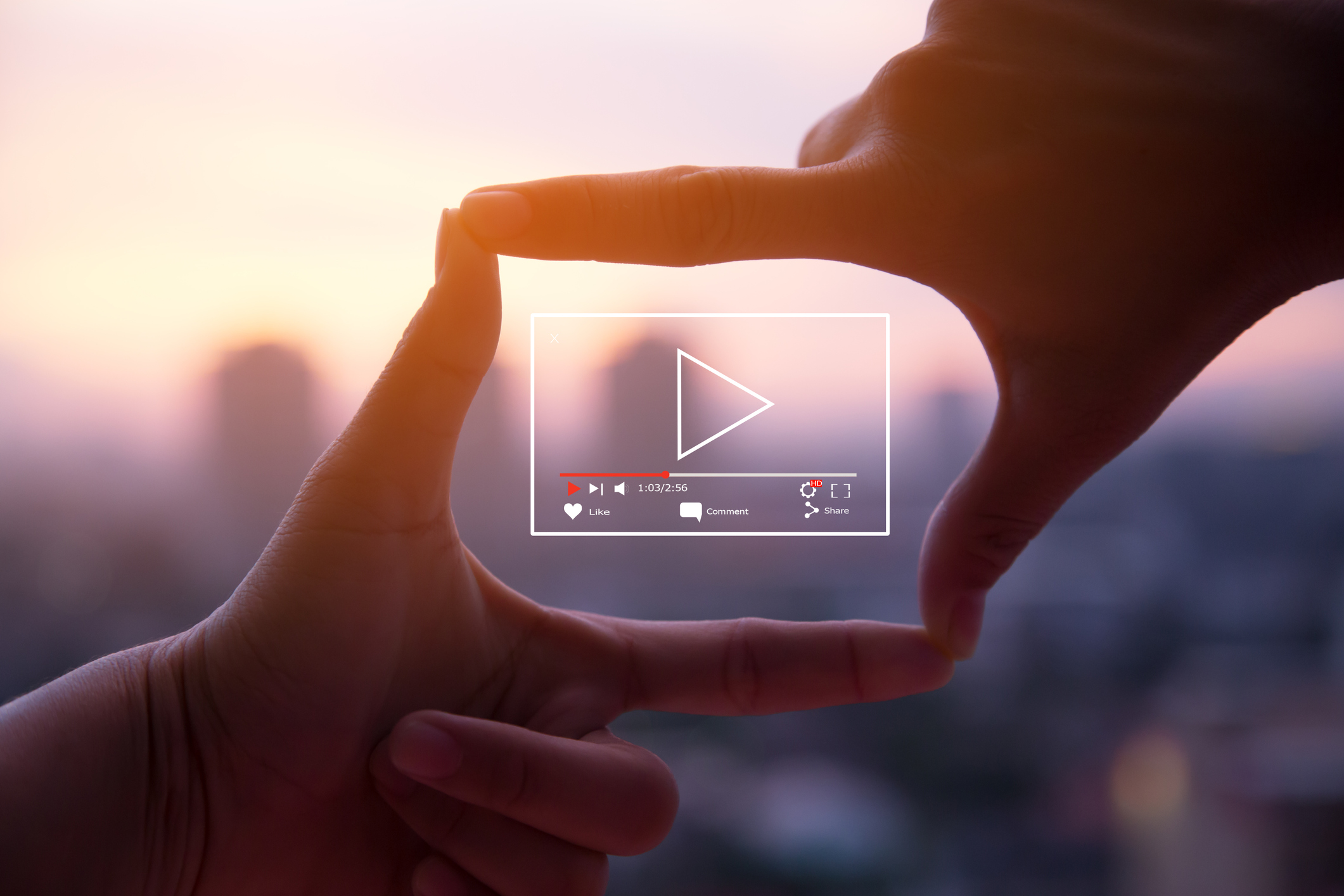There is no denying it: we live in a video world. The amount of time Americans spend viewing all forms of video can either be interpreted as disturbing or as a massive opportunity for marketers. Nielsen reports adult video viewing of six hours per day, while an October 2019 report by Common Sense Media revealed that each day 8-to-12 year-olds spend nearly 5 hours and teens spend over 7 hours on screen media, dominated by video viewing. And, as WordStream points out, there is no shortage of available video content:
- More video content is uploaded in 30 days than the major U.S. television networks have created in 30 years.
- On YouTube alone, 72 Hours of video are uploaded every 60 seconds.
- Every second, a million minutes (17,000 hours) of video content will cross global IP networks by 2021, according to Cisco (via Forbes).
- More than 28 billion devices and connections will be online by 2022, and video will make up 82% of all IP traffic.
Of course, marketers have seized this trend and are increasingly putting their dollars behind video. eMarketer predicts that video ad spending will reach $22.18 billion by 2021. Nearly 90% of online marketers use video content and 51% of marketing professionals worldwide credit video content with the best ROI. In fact, 59% of executives agree they would choose video over text if given the option, not surprisingly since social video generates 12 times more shares than text and images combined (WordStream).
But Why Video?
What marketers may not know is why video, and any form of moving pictures with sound, has such a powerful grasp on viewers attitudes, emotions and behaviors. The answer can be explained by four unique characteristics:


1. Video works differently than other art. Due to the nature of moving pictures, video works differently than all other forms of art and media in the way that the human mind and psyche process it. From a neuroscience perspective, immersive platforms [such as ads & video] primarily utilize a “bottoms-up” process that primarily uses the emotion or limbic centers of the brain and mirror neurons to provide an emotional connection on an unconscious level.
Further, unlike any other medium, video works on the human psyche like a dream. In essence, as William Schultz believes, “It is dreaming while awake-a lucid dream”. Video, which passes images in front of the viewer at a rapid pace, presents far too much information for the conscious brain to process, so much of the content is processed unconsciously. Therefore, as Daniel Kluge explains, “Even if we do not consciously focus on what we are exposed to, our id still is affected by it, and what we do not consciously see thus affects us on a completely unconscious level”.
2. Video is an ideal medium for telling stories. The use of stories is one of the most fundamental ways humans have informed and entertained each other throughout our history. Stories help to inform the way people live their lives by sharing the experiences of others, good or bad. As accomplished screenwriter and director Robert McKey writes in the opening of his book, Story: Substance, Structure, Style, and the Principles of Screenwriting, “Story is not only our most prolific art form but rivals all activities-work, play, eating, exercise-for our waking hours.”


As author Brent Plate suggests, “Artistic images convey a range of human experiences in ways that words cannot”. Philosopher Gregory Currie’s Simulation Hypothesis states, “When we experience fictions… We have imaginings that simulate belief, and our mental processes are engaged ‘off-line’… accounting for the emotional power of movies (video) despite our knowledge that they represent fictional characters and situations”.
3. Video is an entertaining outlet. I would argue, as many scholars do, that the principal reason people attend the cinema, tune into their favorite TV shows or surf the internet for interesting videos, is to be entertained. But it is much more than just entertainment. Film and video provide a chance to unplug from the pressures and challenges of daily living and escapefor a little while. Author M. Darrol Bryant states that, “Film (video) serves as an opiate that leads us away from a proper encounter with the daily reality we live in…and allows us to return renewed to the commonplace”. Additionally, video provides an outlet is by giving the audience a chance to project themselves into an ideal world. Marketers have tapped into this since the early days of advertising, offering readers and viewers a glimpse of how wonderful life could be if they just used their product or service.


4. Video informs our lives. Film also informs our lives in ways ranging from trivial to significant. As Bryant points out, “Cinema [for instance] becomes a place where we can learn the myths of culture, meet its heroes, and be instructed in its characteristic habits”. A famous historical anecdote underscoring this point is that when Clark Gable went bare-chested in the 1934 film It Happened One Night and, allegedly, undershirt sales dropped 75%.
We observe what characters are thinking, how they act and what happens as a result. We cannot help but be shaped by the sheer volume of impressions made upon us every day. We learn a little more about how to make our way in current culture and take action as a result, often thinking and behaving in new ways.
We believe strongly that there is no single form of content that can shape attitudes, emotions and behaviors better than video. Choosing to take full advantage of this power may just be the key to driving incremental growth and ROI. To find out more, contact us.
Written by John Fraser, Founder & President at BTP Unite - John is an account guy at heart, leading global client engagements for several Fortune 500 companies.

